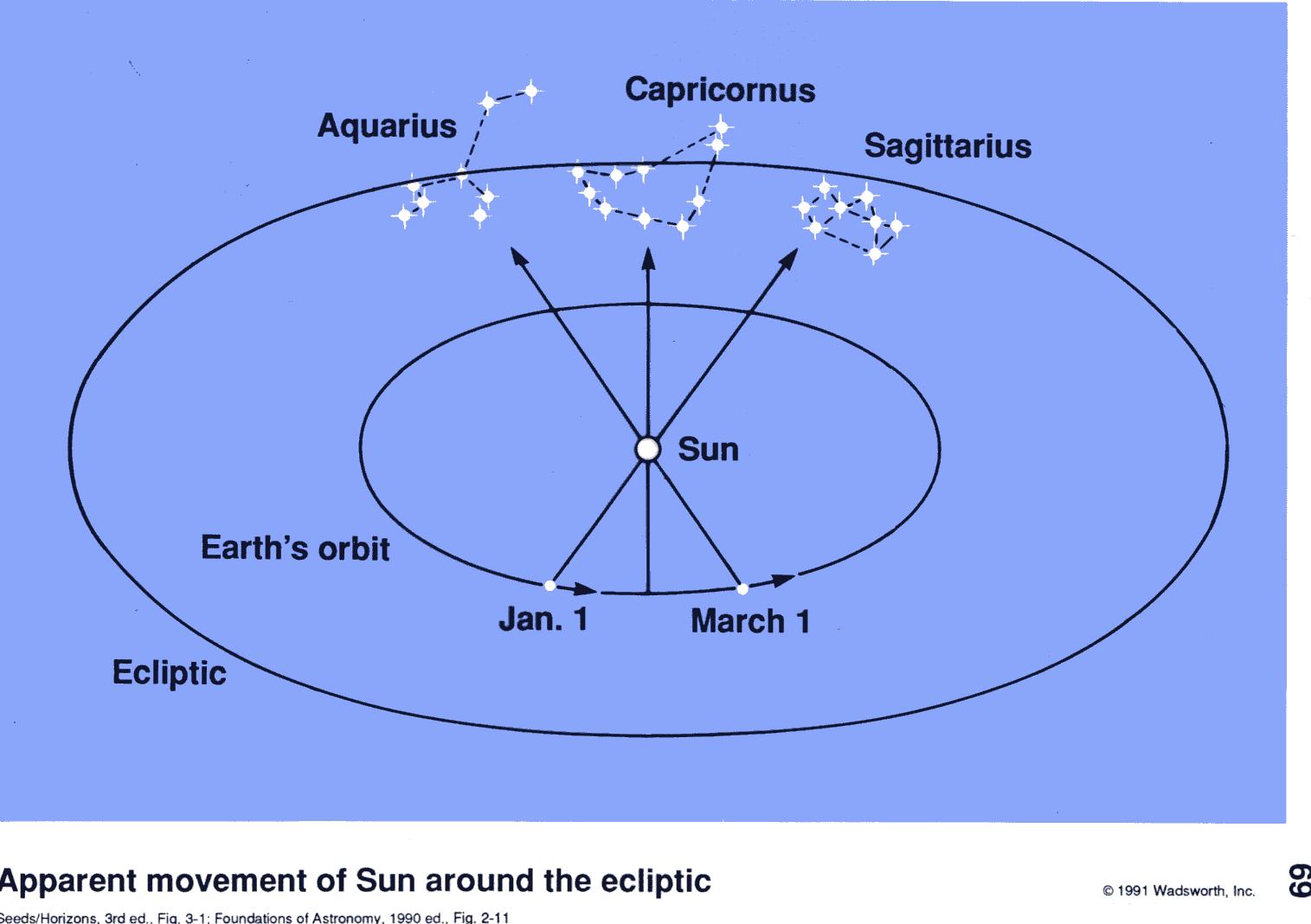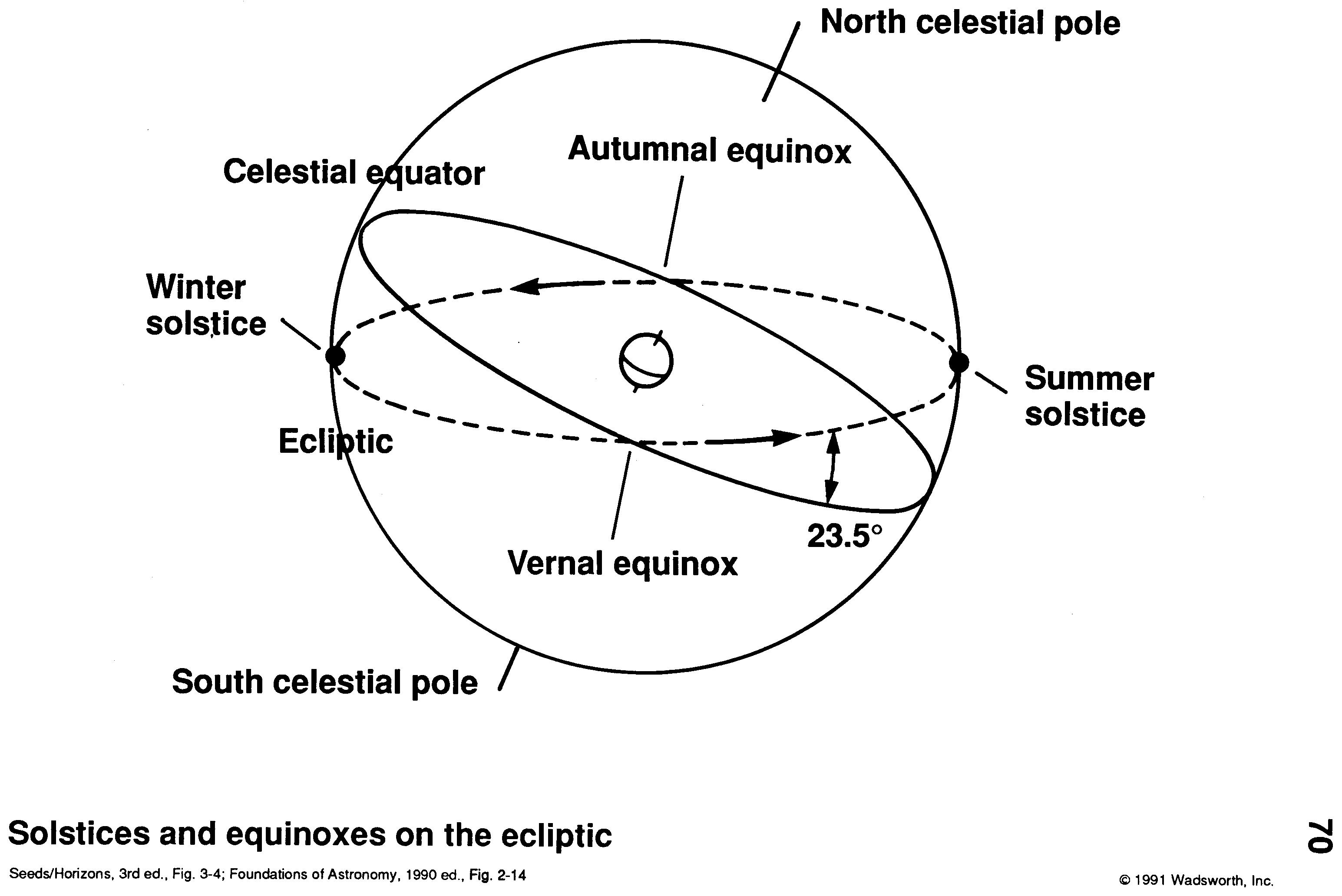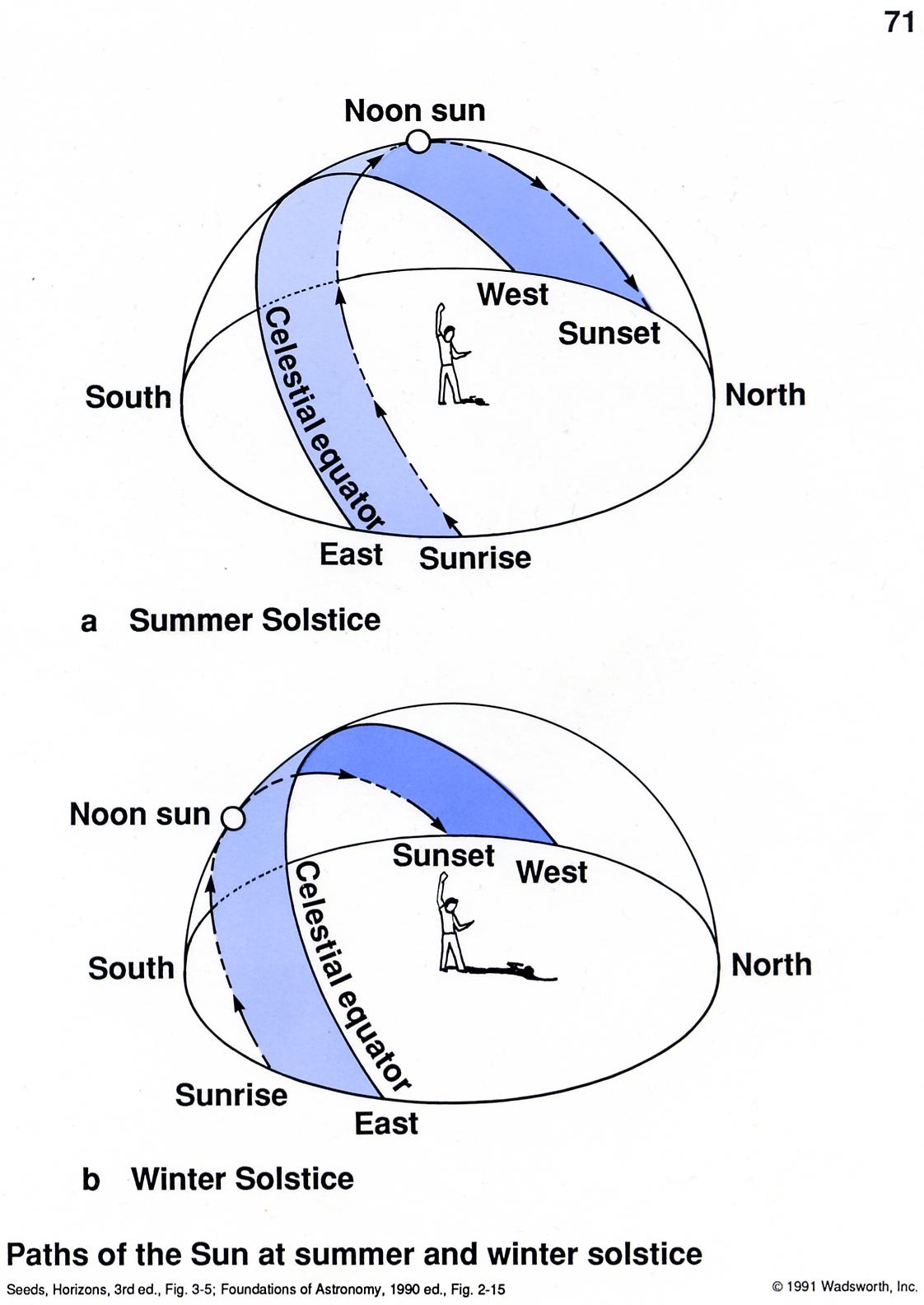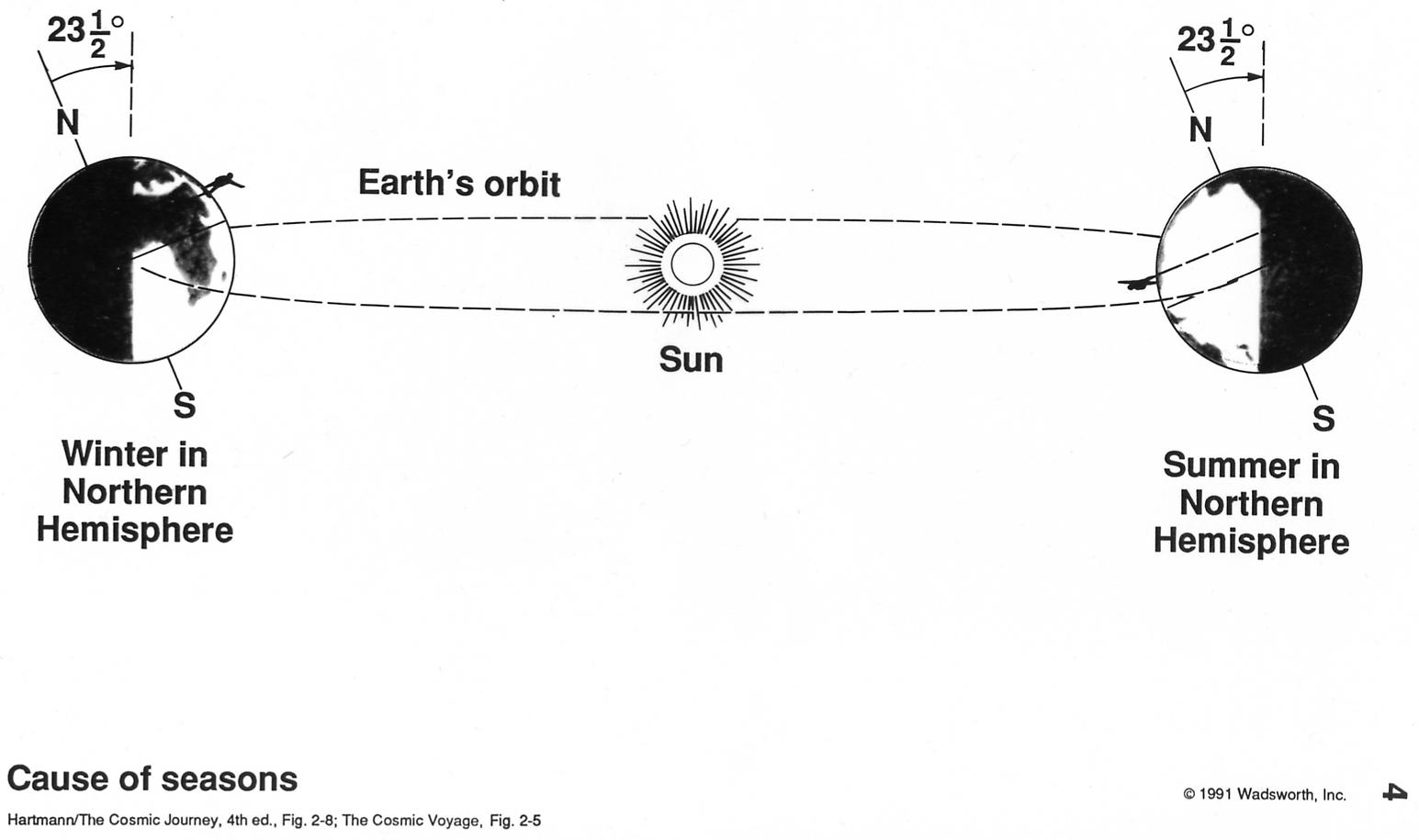LECTURE 5: The reasons for the seasons. |
celestial equator: the great circle produced when the Earth’s equatorial plane is extended outward all the way to the stars.
ecliptic: the apparent path of the Sun, throughout the course of a year, with respect to the background stars. We now know that the ecliptic actually corresponds to the plane of the Earth’s orbit around the Sun.
obliquity: the angle of tilt between the celestial equator and the ecliptic.
equinox: literally “equal night”. The equinoxes are those 2 points where the celestial equator and ecliptic intersect. These two points are the vernal (spring) equinox and autumnal (fall) equinox. Spring begins when the Sun passes through the vernal equinox; autumn starts when the Sun passes through the autumnal equinox. Only at these two times are the lengths of day and night equal.
solstice: literally “Sun still”. The solstices are those 2 points when the Sun reaches its maximum angular distance above the celestial equator (summer solstice), or below the celestial equator (winter solstice). The solstices correspond to the first days of summer and winter.
season: the interval of time between an equinox and a solstice, or a solstice and an equinox.
year: the interval of time it takes the Earth to make exactly one trip around the Sun.
declination: basically, sky latitude. The angular distance (in degrees) of an object to the North or South of the celestial equator.
right ascension: basically, sky longitude. Starting from the vernal equinox and moving eastward, it is the angular distance along the celestial equator you need to travel to get to an object in the sky. The only thing goofy about right ascension is that it is measured in hours, minutes, and seconds and not in degrees.

| The apparent path of the Sun against the background stars is known as the ecliptic. |

| Those two points where the celestial equator intersect the ecliptic are known as the equinoxes. Those two points most distant from the celestial equator are known as the solstices |

| The ecliptic is inclined to the celestial equator. Therefore, the Sun spends half of the year above the ecliptic (Spring & Summer), and half of the year below the ecliptic (Autumn & Winter).This is true, regardless of whether you live in the Northern or Southern hemisphere. It also explains why seasons are reversed in the two hemispheres. |

| When it is Summer in your hemisphere, your pole is tipped towards the Sun. You receive sunshine for more than 50% of a 24-hour day. Nights are shorter than 50% of the day. More sunshine = more solar energy = warmer weather.When it is Winter in your hemisphere, your pole is tipped away from the Sun. You receive sunshine for less than 50% of a 24-hour day. Nights are longer than 50% of the day. Less sunshine = less solar energy = cooler weather. |
This Web page is maintained by
Bob Marcialis
Copyright © 2003 Robert L. Marcialis
![]()
Last Modified: 2003 July 27